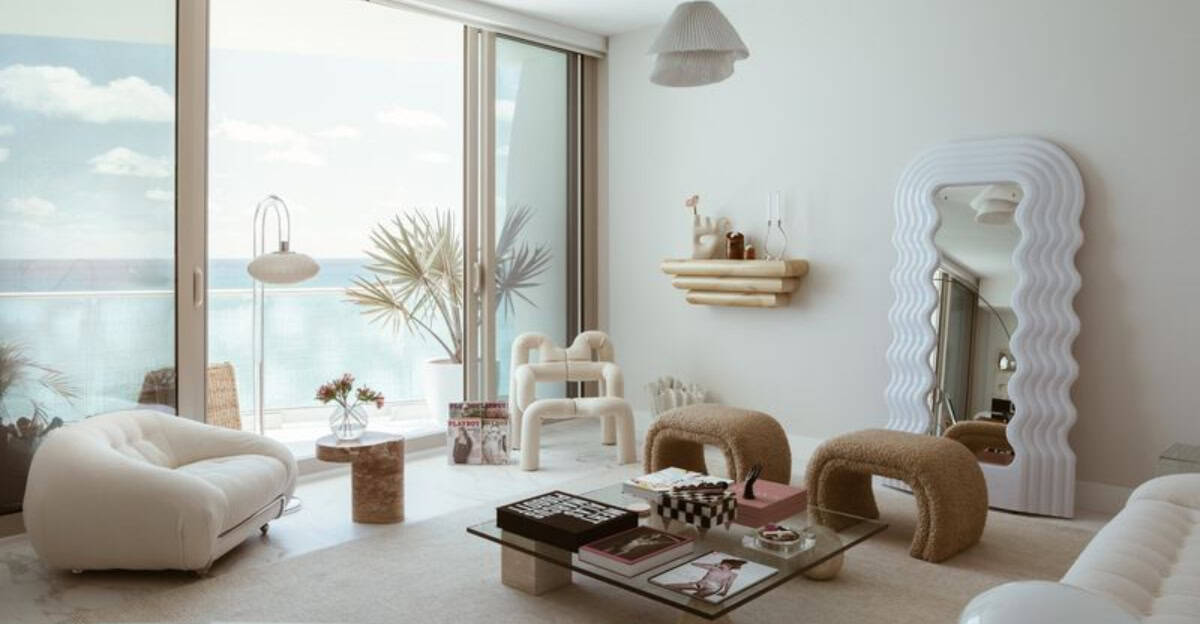Embrace the essence of nature in your living spaces without a single leaf in sight!
Biophilic design isn’t limited to plant life; it’s about fostering connections with nature through various elements like light, water, and natural materials.
Whether you’re redesigning a room or starting from scratch, these innovative ideas will infuse your home with a refreshing natural ambiance.
Explore these 10 plant-free ways to bring the outdoors inside, making your home a sanctuary of tranquility and inspiration.
1. Natural Light Optimization
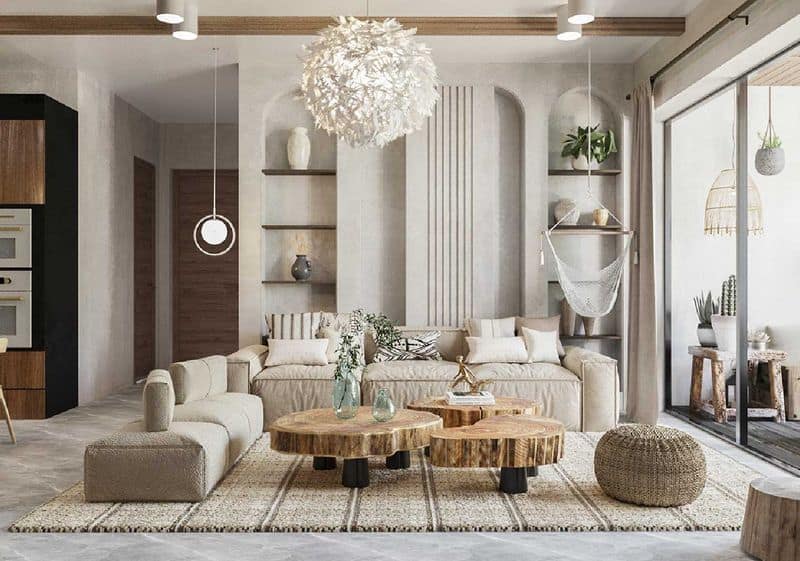
Maximizing natural light in your home can transform your living environment into a bright, open sanctuary. Start by placing mirrors opposite windows to reflect daylight, enhancing the luminosity.
This simple trick not only maximizes light but also creates an illusion of more space.
Consider sheer curtains that allow sunlight to filter through while maintaining privacy. These delicate fabrics dance softly with the breeze, adding a touch of elegance.
Beyond aesthetics, natural light improves mood and energy, making spaces feel inviting and alive. It’s the perfect first step in biophilic design, bringing the sun’s vitality indoors.
2. Use of Natural Materials
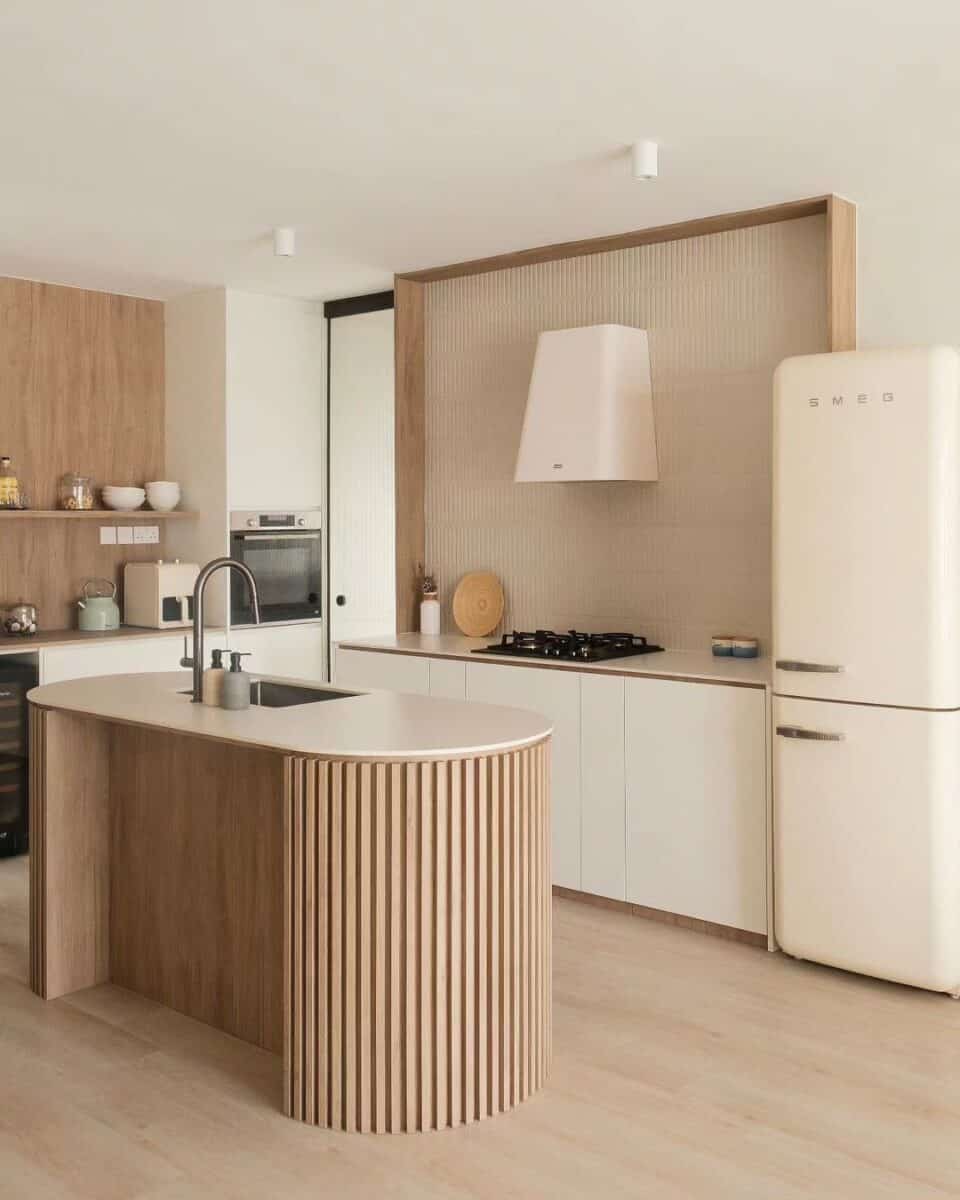
Incorporate natural materials like wood, stone, and wool to create a tactile connection to nature. Wooden beams and stone fireplaces lend a rustic charm, reminiscent of serene wilderness retreats.
Textiles like wool or cotton add softness and comfort, enhancing the sensory experience. These materials breathe life into interiors, offering a grounding presence that synthetic materials often lack.
Such choices not only provide aesthetic beauty but also echo nature’s harmony.
By selecting materials that age gracefully, you’re building a narrative of enduring elegance, deeply rooted in Earth’s timeless beauty.
3. Water Features

Integrating a water feature can bring a sense of calm and tranquility to your home.
The gentle sound of flowing water from a small indoor fountain can create a serene atmosphere, reminiscent of a babbling brook.
Water’s soothing presence can be a mental escape from the hustle and bustle, inviting relaxation and mindfulness. It also adds a dynamic element to the decor, engaging both visual and auditory senses.
From tabletop fountains to larger installations, water features are versatile and can be tailored to fit any space, enhancing the biophilic experience.
4. Natural Color Palette
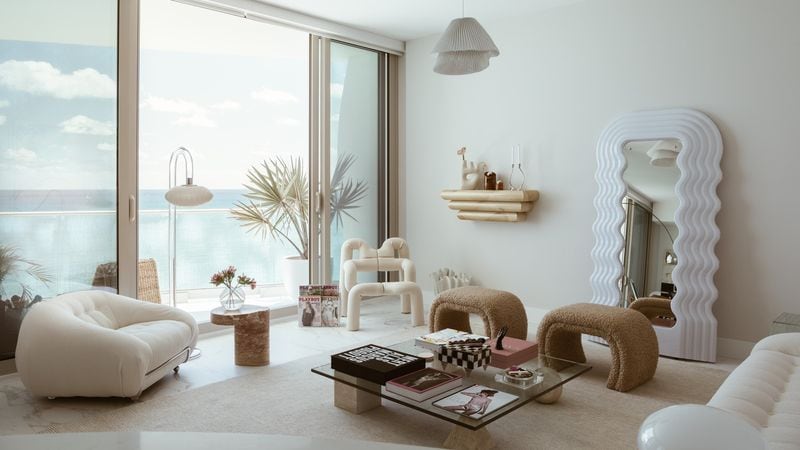
Embrace a natural color palette inspired by the earth’s hues to create a soothing and cohesive environment. Think muted greens, soft browns, and gentle blues that mimic landscapes.
These colors can have a calming effect, promoting a sense of peace and stability. Use them on walls, furnishings, and decor to create a harmonious flow throughout your space.
By drawing from nature’s palette, you invite the tranquility of the outdoors inside, making your home a restful retreat.
Colors inspired by nature have a timeless appeal, easily adjustable to personal tastes.
5. Nature-Inspired Art
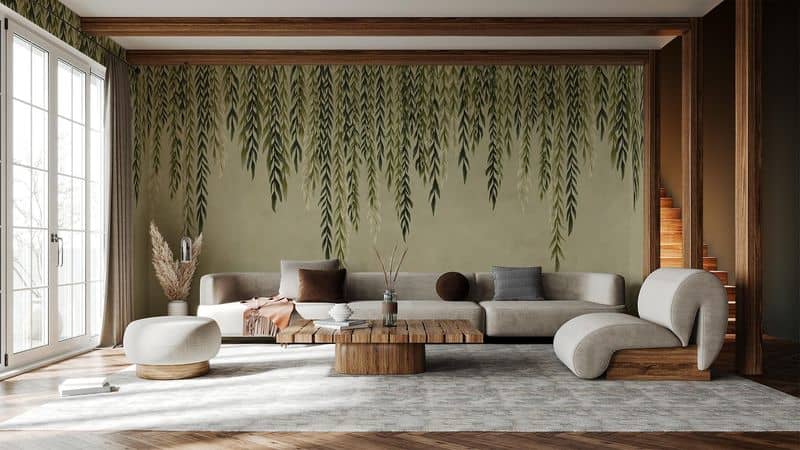
Art can be a powerful conduit to nature. Curate a collection of nature-inspired artworks to evoke the beauty of the outdoors. Whether it’s landscapes, botanical studies, or abstract interpretations, art can transport you.
These pieces offer windows to natural wonders, sparking creativity and introspection.
The artwork becomes a focal point that ties the room together, providing continuous inspiration and connection to the natural world.
Such visual storytelling through art fosters an ambiance that speaks to our innate love for nature, making every glance a refreshing escape.
6. Textural Variations
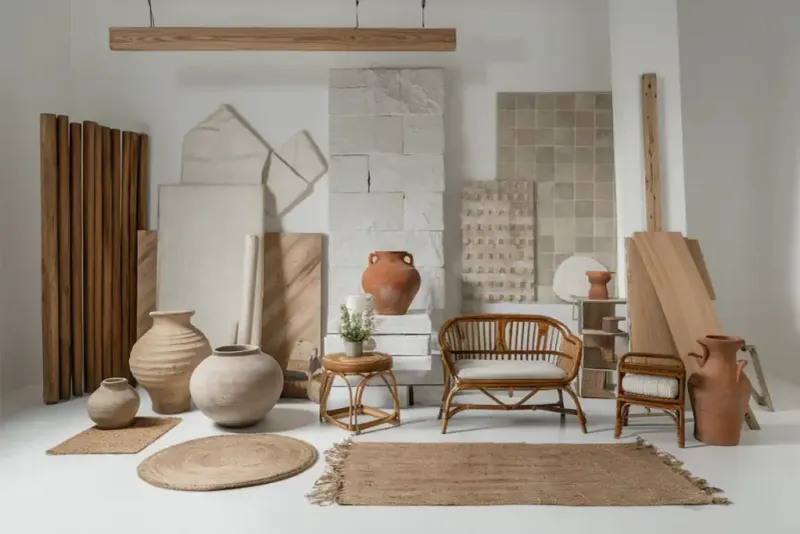
Introduce textural diversity in your home to mimic the varied textures found in nature. Combine materials like rough stone, smooth glass, and plush textiles for an engaging sensory experience.
These variations add depth and interest to your interior, making spaces feel dynamic and alive.
Texture plays a crucial role in biophilic design, appealing to both touch and sight.
By layering different textures, you create a rich tapestry that invigorates the senses, encouraging interaction with your environment. It’s a subtle nod to the complex beauty of the natural world.
7. Biophilic Lighting Designs
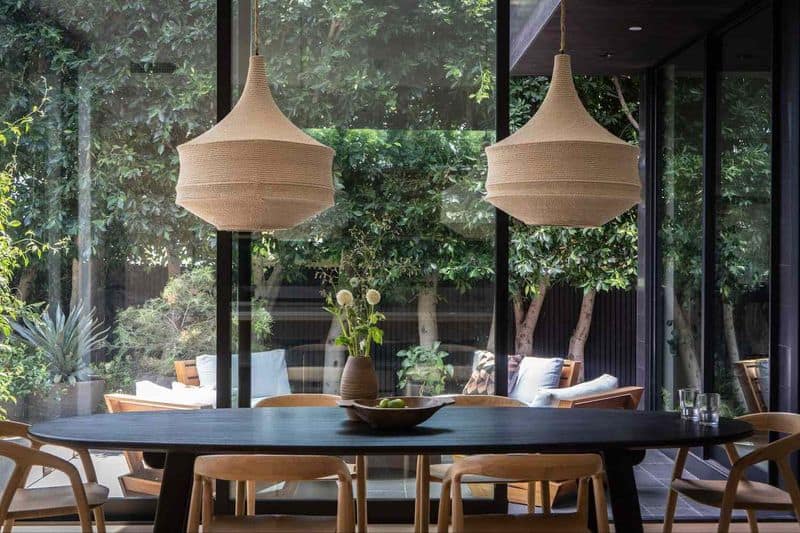
Lighting plays a pivotal role in biophilic design. Opt for fixtures that mimic natural forms, such as branching chandeliers or lamps resembling tree silhouettes. These designs create a visual connection to nature.
Also, consider lighting that offers adjustable warmth to simulate natural daylight patterns, enhancing circadian rhythms and well-being.
This adaptive lighting can transform the mood of a room, offering comfort and flexibility.
By choosing biophilic lighting, you invite nature’s grace into every corner, reinforcing the connection between indoor spaces and the natural environment.
8. Natural Patterns and Shapes
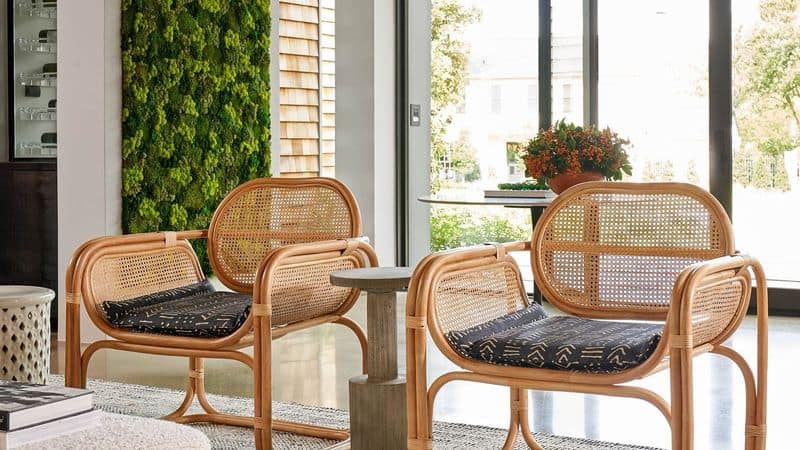
Incorporate natural patterns and shapes to subtly echo nature’s design. Look for decor elements with motifs like honeycombs, waves, or leaf patterns, which create a fluid, organic feel.
These designs can be woven into textiles, wallpapers, or furniture, offering visual continuity and harmony.
Natural patterns engage the eye and mind, providing a sense of balance and rhythm.
By integrating these elements, you bring the quiet elegance of nature into your home, creating a soothing backdrop that feels both timeless and contemporary.
9. Eco-Friendly Materials

Choosing eco-friendly materials for your home interior is a step towards sustainability and a healthier lifestyle.
Bamboo flooring, recycled glass countertops, and organic cotton fabrics are excellent choices.
These materials not only reduce environmental impact but also improve indoor air quality, promoting health and well-being. They’re durable, stylish, and tell a story of mindful living.
By opting for eco-friendly options, you’re embracing a sustainable ethos that aligns with the principles of biophilic design, creating a space where nature and modern living coexist harmoniously.
10. Open Spaces and Flow
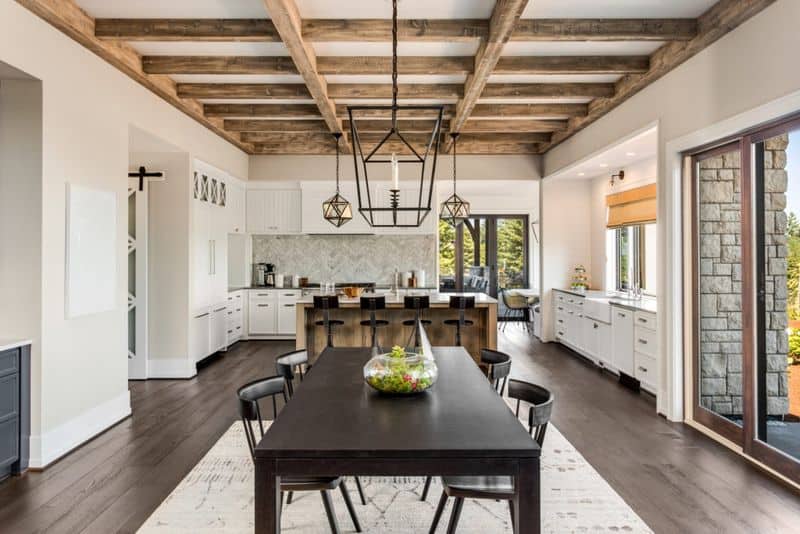
Designing open spaces encourages movement and connection, mirroring the boundless nature of the outdoors. Minimize barriers like walls and partitions to create a fluid flow between areas.
This design approach fosters interaction, making spaces feel airy and unrestricted. It enhances the sense of community and engagement, reflecting the open landscapes of nature.
By prioritizing open spaces, you ensure a home that feels expansive and welcoming, embodying the liberating spirit of the natural world.
It’s an invitation to live freely and connect deeply within your own environment.

